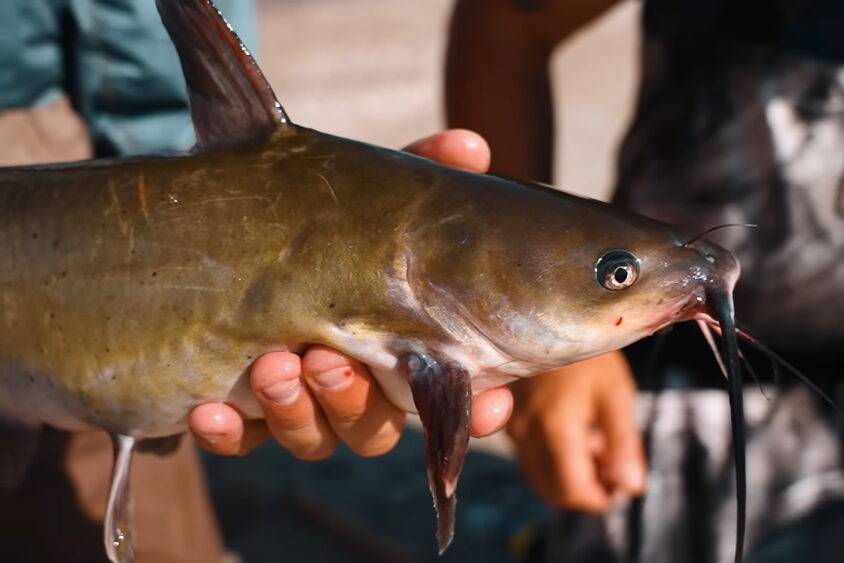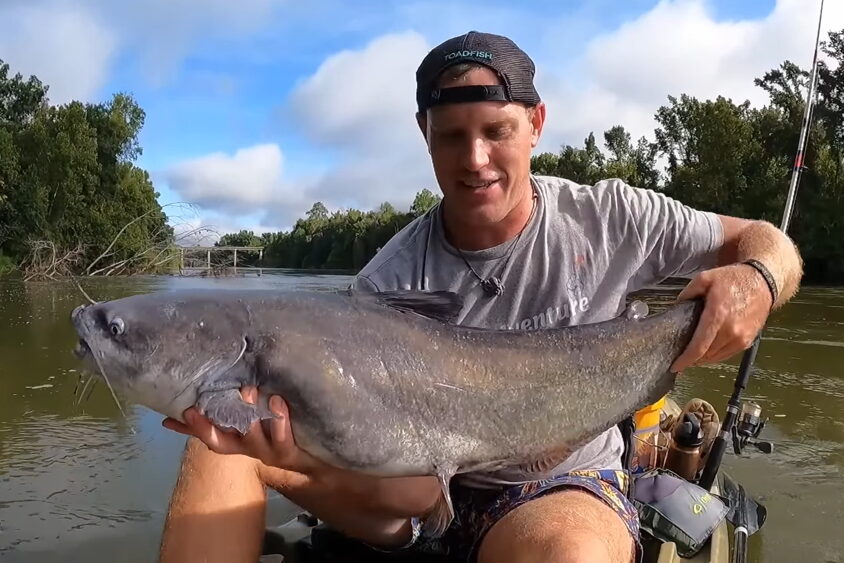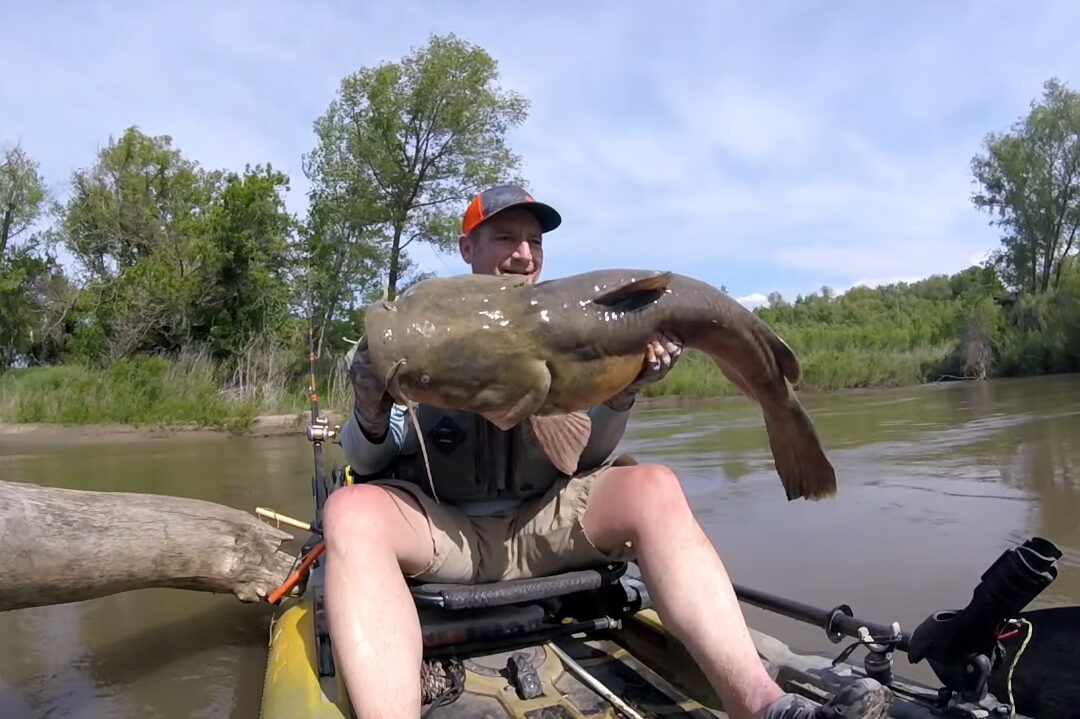Catfish are a popular fish to catch in lakes and rivers. There are a few different ways to fish for catfish, depending on the type of water you’re fishing in.
If you’re fishing in a lake, the best way to catch catfish is from a boat. You can drift your bait along the bottom of the lake to attract the fish. If you’re fishing in a river, you can use a few tactics, depending on the current. If the wind is strong, you’ll want to use heavier bait, so it doesn’t get swept away. You can also use a bottom rig, which will help keep your bait in place.
How do you fish for catfish?
The best way to fish for catfish in lakes and rivers is by using a rod and reel. The best fishing spots are near prime holding areas for the catfish. You can use a bobber to keep the bait down in the water and avoid snagging. It is also essential to keep your line tight so you do not get bowled over by the bait.
You can use a long-handled net to land the fish once caught. Channel catfish are not the most beautiful fish, but they always put up a fight and make for delicious eating. Most catfish are in the 10- to 15-pound class.
Catfishing is best done at night or in the early hours of the morning when the sun is not at its strongest. Catfish are attracted to warm water, but they avoid direct sunlight. The best time to catch catfish is during the cooler parts of the day or at night.
Catfish are a popular choice for fishing because they are delicious. When fishing for catfish, it is essential to use live bait and to be patient. Drifting is usually more productive than anchoring in most situations, but anchoring may be the better option if it is windy. Moving the bait can also help to excite lethargic fish and encourage them to strike. Try these tactics to increase your chances of catching a giant catfish.
What are the common Catfish types?
A catfish is any numerous freshwater or saltwater members of the Ictaluridae family. The three most common types are channel catfish, blue catfish, and flathead catfish, though many other types exist.
Channel Catfish
Channel Catfish are a very popular catfish in the United States and can be found throughout many states. They live in both freshwater lakes and rivers, so it’s possible to find them anywhere you live. There are many different tactics that people use when they’re catfish fishing, but there is one tactic in particular that is incredibly successful.
The best tactic for catfish fishing is to set up one or two poles in the river, preferably near a drop-off. A good bait option would be nightcrawlers on a bottom rig. This tactic is very effective because the catfish are more active at night and will be attracted to your bait.
Another option for a good bait is chicken liver on a hook. This will also be very attractive to the catfish because it’s something that they would eat in the wild.
The best time of year for this tactic is spring or fall when there aren’t many other people fishing for catfish. This is because the water will be colder in these seasons, making the fish more active at night. If you’re looking to try something new, this is a great tactic. It’s fun and exciting, and you’ll surely catch some big fish.

Blue Catfish
Blue Catfish are the most common catfish caught in lakes and rivers. They can be found all over North America but prefer areas with slower-moving water. One of their favorite foods is crayfish, which they sometimes catch with their whiskers.
Blue Catfish are ambush predators and feed primarily on fish, frogs, turtles, and other aquatic animals that live in or near the water. They are a popular food fish in the Southern United States and have been introduced to many different areas of North America, including California.
Blue Catfish can grow up to 3 feet long and weigh as much as 100 pounds. They have a lifespan of 20 years or more. The Catfish family includes over 200 species, but only about 30 are commonly caught for food and sport fishing. Of all the catfish in North America, the blue catfish is the biggest. It can grow to be over 3 feet long and weigh as much as 100 pounds. These fish have a lifespan of 20 years or more.
To fish for Blue Catfish, you need to use heavy tackle. A rod and reel with a line at least 15 pounds test will work best. You can also fish for them using live bait or artificial lures. Blue Catfish are nocturnal fish, and they are most active at night.
They eat almost anything that can fit their mouths, including other fish, frogs, snakes, turtles, birds, and even small mammals. They are not picky eaters! Blue Catfish prefer to live in the muddy bottoms of lakes and rivers with slow-moving currents.

Flathead Catfish
Flathead catfish are one of the most sought-after catfish to capture and consume. They prefer low-current, clear water, making it much easier to catch in lakes than in rivers. Flathead Catfish are known to be more active at night, so fishing for them is best done in the evening. This catfish can grow up to three feet long, making it a perfect meal for those who love to eat catfish.
The best tips and tactics for catching Flathead Catfish in lakes or rivers are to use live bait (freshwater shrimp, crayfish, and worms) for the best results. Live bait attracts more catfish than cut bait or artificial lures. A medium-sized rod with a high-quality spinning reel is the best way to catch Flathead Catfish. The rod should be at least six feet long, and the fishing line should be about 15 pounds test.

What are the best places to go catfish fishing?
The best places to go catfish fishing are lakes and rivers. Places like the Ohio River, Lake Erie, Kentucky Lake, or other large bodies of water are perfect for catching catfish. These locations provide plenty of fish to choose from and various settings. Catfish are very easy to catch and can be found in many lakes and rivers.
Catfish are easy to catch because they have many taste buds on their barbels. The barbels are the whiskers that hang down from the catfish’s mouth. Catfish have around 100,000 taste buds on their barbels and can taste food from a long distance away.
Catfish are also easy to catch because they are nocturnal. Catfish like to feed at night and rarely come out during the day, so it is easier to catch them in the evening or early morning hours.
What type of equipment do you need for catfish fishing?
To go catfish fishing, you don’t need a braid – monofilament works just fine. For hooks, use treble hooks or circle hooks if you’re after monster fish. Circle hooks are best for catching catfish, but you should still use a treble hook on the other end of your line for safety.
Catfish can get hooked in their mouths and swim away, so a treble hook on the other end of your line can catch and keep it from getting away. To help you find and catch catfish, use brightly-colored baits and bobbers.
You’ll also need a sturdy rod holder, a big rigid net, and some gloves to handle the fish. Finally, don’t forget the bait! Catfish are bottom feeders, so you don’t need to worry about the bait falling off.
What bait should you use for catfish fishing?
Finding a bait that will work well for the type of catfish you are trying to catch is essential. Depending on the catfish you are targeting, many different types of bait can be used for catfish fishing. Other baits work better for different types of fishing. For example, when catfish fishing in lakes and rivers, it is important to use a specific bait for that type of fishing.
Catfish can be caught on a variety of baits. The following are some examples: worms, crickets, stink bait, and chicken liver. If you want to catch channel catfish in lakes or rivers, it is best to use chicken liver. Stink bait will be your best option if you want to catch blue catfish in the exact location.
You should also consider using different bait for each type of catfish that you are trying to catch. An excellent place to start is by using a chicken liver as your primary bait and then switching to stink bait if the first choice doesn’t work.
How do you set up your tackle for catfish fishing?
Different types of tackle are needed for catfishing, depending on the waters and depths being fished. Generally, a heavier-weight bait caster with a heavier and slower-moving bait is better for giant catfish, while light tackle fishing calls for a bait caster with a heavier bait and a size 4/0-6/0 bait hook.
For leader and hook sizes, 18-36 inch monofilament is recommended. Braid is better for feeling the bottom, while monofilament provides better drag.
What are the common mistakes made when catfish fishing?
One of the most common mistakes when catfishing is not fishing in different locations to find the best spots. Another mistake is fishing at banks with flat, snag-free surfaces.
It is essential to cast your bait beneath a bobber to avoid snagging. It is also crucial to keep your line tight: the bait will be pulled downstream, leaving you in a bad position to set the hook if you don’t.
Finally, don’t let your guard down: the fish might be too big for your net, and you’ll have to let it go. Anchoring is an excellent way to fish when the fish are in shallow water or when you are fishing a specific structure.
This will help you avoid scaring the catfish away with your boat. Be careful not to make too much noise, and keep your movements to a minimum to avoid spooking the fish.
What kind of cover holds catfish?
Catfish are nocturnal feeders, so they may not always be where you expect them to be. Some catfish like to hang out near the surface of the water, while others will be much deeper. Some catfish like cover near the bottom, while others prefer to be in open water. You might need a different bait for each type of fish.

